Written by Victor Vance, Senior Application Engineer
& Brianna McCord, Product Engineer
Industrial Adhesives and Tapes, 3M

Engineers programming automated, liquid-adhesive dispensing equipment.
Although demands for production goods have trended positively over the last decade, surges in material costs, wages, and manufacturing overhead are challenges companies must continue to face to meet these demands.
The current state of production performance is primarily built on employee historical knowledge, particularly in terms of troubleshooting and problem-solving. However, this is far from an ideal approach for gaining and maintaining control over the production process.
In fact, a consistent trend indicates that a firm control of production is one of the best ways to meet demands. This cannot be achieved through a reduction in labor. Historical employee knowledge and, in turn, production process control, would typically be lost — which could lead to an increase in performance variability, possible downtime, and troubleshooting time.
Data and automation in manufacturing
As manufacturing continues to evolve toward a more advanced and connected ecosystem, a new environment is emerging. It is one in which data and automation are increasingly playing a central role. Integrating automation in the production process is a strategic and reliable alternative to reliance on labor alone. It can, to a certain extent, guarantee production process control.
The use of data, including material and production data, will impact many parts of the production process. Material data, found in technical data sheets and similar documents, provides insight into many key automation requirements and parameters.
Collecting and analyzing production data can lead to predictive manufacturing, reducing downtime and troubleshooting time.
More than merely robotics, automation drives efficiencies by streamlining and optimizing processes, reducing waste and processing time, and improving quality. This frees up capital for business investment and expansion while reducing a sole dependency on labor. With automation, producers can re-deploy labor and resources to drive impact elsewhere.
This requires precision control, the interface of people, data, machines, and real-time communication functionality, which must be integrated into ever-smaller footprints. It must also be nimble enough to adapt to ever-changing demands.
At the same time, the safety and durability of these systems are required, as harsh environments and challenging world circumstances become the norm.
Automating tapes and adhesives
One component of process automation in the adhesive industry is the dispensing of tapes and liquid adhesives. Such automation serves to increase quality, consistency, and repeatability, which are important for controlling processes and improving production. Relying on labor for such tasks, and especially unskilled labor, introduces variability in the process.

A process assist with a push-through laminator for tape application.
Attracting skilled labor remains a challenge for many organizations. Implementing improvement tools to create different application techniques and more control into the production process is recommended to foster operational growth.
Automating the application of tapes and liquid adhesives is a trend that has accelerated for manufacturing companies to remain competitive and relevant. Integrating process-assisted tooling, fixed automation, and flexible automation into the production process increases control and transfers the responsibility of dispensing from staff to the acquired machinery.
Additionally, relying on data to validate and streamline decision-making supports efficiency and growth across all operations.
While some markets continue to rely on labor to perform the application and dispensing of tapes and liquid adhesives through manual tools, other markets have turned to automation to offer greater efficiency and improve production performance across operations.
Automation offers a spectrum of solutions, from fully automated processes across production operations to niche solutions and applications, such as a simple dispensing or bonding solution. Customers and end-users are increasingly recognizing the benefits of investing in automation to improve their production processes.
Automating the dispense of tapes and liquid adhesives encompasses a broad range of equipment and technologies ranging from simple manual tools to customizable multi-axis robots. Whether integrating automation into processes to increase productivity, quality, safety, or reduce costs, customers and end-users are increasingly moving away from the use of handheld manual tools to automated equipment and data.
Ultimately, the automated dispense equipment selected is based on many factors. It might relate to the level of human interaction necessary, material chemistry, cost, the volume of dispense/output rate, the precision required, and the type of dispense. For instance, the equipment used to dispense hot-melt and polyurethane hot-melt adhesives is different than those used to dispense structural adhesives.
As for the dispensing equipment, several options exist and depend on the type of adhesive and the level of automation desired. Parts can also be modified or replaced as required. A full understanding of the type of adhesive for dispensing is necessary before choosing the equipment.
Material data, including information in technical and safety data sheets, provide insight into a significant number of automation requirements and parameters, particularly when it comes to liquid adhesives. Access to material data such as viscosity, density, the ratio by weight or volume, and a shear rate of the material provide vital insight for the equipment setup and appropriate dispense settings to create the desired application outcome.
Knowing other material data, such as the adhesive ingredients, is important to help prevent and schedule maintenance. Depending on the size and shape of some fillers, pigments, and dyes, these can have an abrasive effect on some of the equipment pieces the adhesive may flow through. Material data is essential to successful automation.

An example of flexible automation at work using modular robotics.
From one level to another
Moving from one level of automation to another is not an easy task. It involves identifying the long-term goals and objectives of the manufacturer and the budget to purchase products, equipment, and training staff. It also involves connecting with the right material and dispense equipment suppliers, integrators, and converters.
Identifying the ideal partners to work with based on the needs and objectives of the producer is a crucial element in successfully moving from one level of automation to another.
Adopting a new level of automation can disrupt the current production process, so it’s important to source the audit results and insights from production operators. Collecting undocumented insights helps to identify inefficiency gaps and with choosing effective automation equipment for process improvement and optimization.
When implemented correctly, automation can bring many benefits to a facility: an increase in reliability, performance, quality, and lower operating cost. Setting goals and milestones, knowing the challenges, and strategic planning are the elements that define a successful automation implementation process.
It’s important to note that integrating automation and data in manufacturing does not eliminate the production workforce from the process. The human element in production allows for the addition of equipment to the process, and the programming and operating of automated dispense equipment. Labor will simply look different. Employees will no longer be dispensing and performing manual labor themselves but, rather, will be responsible for programming and operating automated dispense equipment.



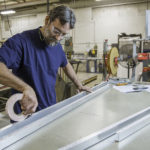

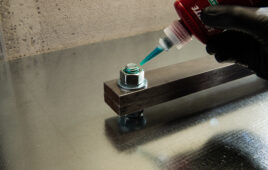
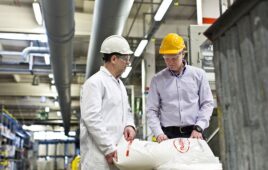
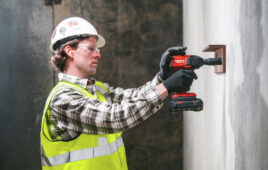
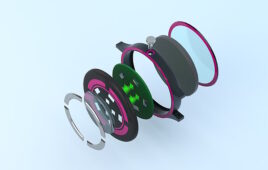
Tell Us What You Think!